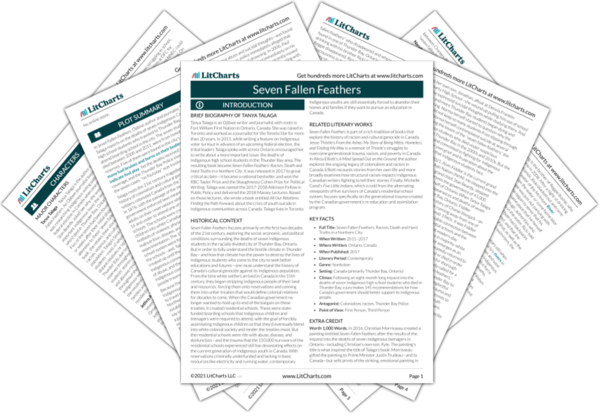Previous
Chapter 10: Seven Fallen Feathers
|
Previous
Chapter 10: Seven Fallen Feathers
|
Seven Fallen Feathers: Epilogue Summary & Analysis |
Next
Themes
|


Upgrade to unlock the analysis and theme tracking for all of Seven Fallen FeathersSeven Fallen Feathers!
Get LitCharts A+